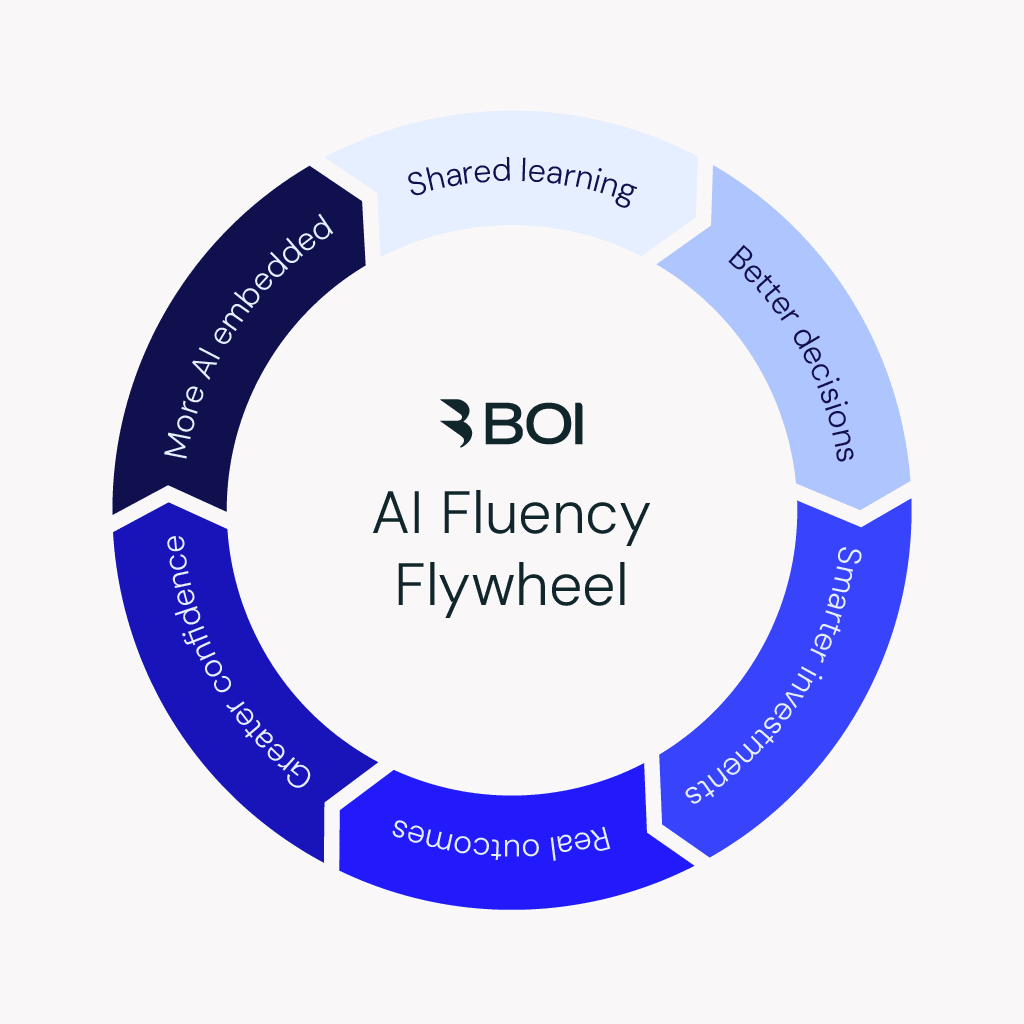The Fast Company Impact Council is an invitation-only membership community of leaders, experts, executives, and entrepreneurs who share their insights with our audience. Members pay annual dues for access to peer learning, thought leadership opportunities, events and more.
AI is no longer a side project. It now sits at the heart of how companies grow, compete, and make decisions. Yet many leaders still struggle to separate hype from value and wonder how to invest wisely without wasting time or resources.
A key challenge lies at the top: a lack of AI literacy among executive teams. Research covering nearly 7,000 executives across 645 firms shows a clear pattern: Companies led by AI-literate teams are more likely to identify where AI can create value and act on it.
Rethink responsibility
Many executive teams still treat AI as a tech issue—something for IT or data teams to figure out. But AI is a leadership issue. It belongs on the agenda of every CMO, CFO, CHRO, and CEO.
More importantly, it’s not about a single role. It’s about the collective literacy of the top team. Research rooted in upper echelons theory confirms this: AI-literate leadership teams are more likely to build strategic visions that integrate AI and translate that vision into tangible action, from capability building to execution.
So appointing a chief AI officer (CAIO) without a broader shift in understanding won’t be enough if the rest of the executive team can’t grasp the art of the possible and actively shape the direction AI takes in the business. As one leader put it, “Hiring a CAIO is like hiring a pilot for a crew that doesn’t believe in flying.”
The cost of poor AI literacy
As MIT Sloan Management Review points out, “The overall low literacy rate is a problem for today’s executives, who will face more and more processes or products that claim to be “powered by AI.”” Making informed decisions about these AI tools requires leaders to understand how they align with strategy and operations—and to know which questions matter.
Without a clear understanding of what AI can do—or where it breaks down—executive teams fall into familiar traps:
- Buying into hype they can’t evaluate
- Investing in tools without understanding their fit
- Setting expectations AI (or teams) can’t meet
- Focusing on flashy pilots instead of long-term capability building
The result is often pilot purgatory, or initiatives that stall. Missed opportunities. And in some cases, the slow decline of companies that once dismissed digital as a passing trend.
From confusion to competence: The AI literacy ladder
To help executive teams assess where they stand and what to do next, we use a five-step model: the AI literacy ladder. Think of it as a five-step staircase representing the typical journey executive teams take as they build fluency in AI, moving from scattered perspectives to a shared understanding and strategic alignment:
- Confusion: AI feels like a buzzword. There’s no shared understanding or agreement on relevance.
- Curiosity: Interest is rising, but views are fragmented. There’s little clarity on where to begin.
- Comprehension: The team develops a common language around AI’s potential and risks.
- Confidence: Teams ask sharper questions and align on use cases that matter.
- Competence: AI becomes part of strategic planning and decision making.

Why AI-literate teams outperform
When executive teams build AI fluency together, they unlock a dynamic we call the AI fluency flywheel: Teams that move beyond confusion and start learning together gain momentum. They stop treating AI as an isolated initiative and start treating it as a core strategic capability. Over time, this fluency allows them not just to respond, but to lead.

So where do executive teams learn AI?
Despite the flood of AI training programs, few are built for leadership teams. Most are either too technical, too long, or designed for individuals. What’s missing is a shared learning experience. One that helps leadership teams:
- Understand what’s possible and what’s not
- Cut through noise and inflated promises
- Align on use cases worth pursuing
- Build a common language across roles
Closing the gap starts at the top
As AI reshapes how organizations operate and compete, executive teams can’t afford to stay on the sidelines. The journey toward AI maturity isn’t about becoming technical experts. It’s about building shared fluency across the leadership team. It starts with honest reflection: Where are we on the AI literacy ladder? What will it take to move forward, together?
The first step is simple but powerful: Make space for the conversation. Invite different perspectives. Commit to learning together. Teams that do this won’t just keep up. They’ll help shape what’s next.
Philippe De Ridder is founder and CEO of BOI (Board of Innovation) and AUTONOMOUS. Laura Stevens, PhD is managing director, Data & AI at BOI.
